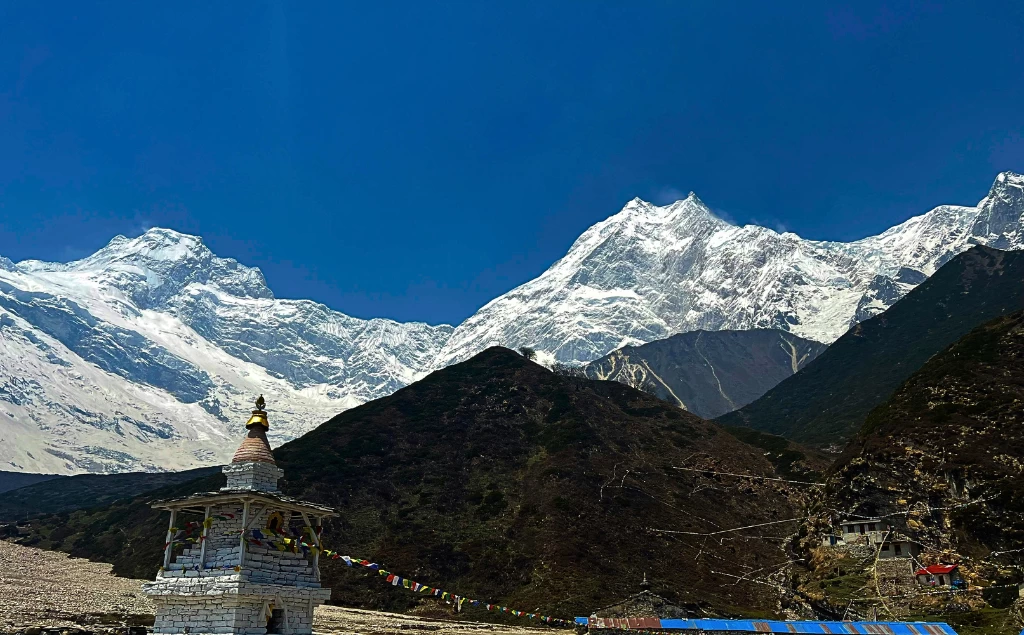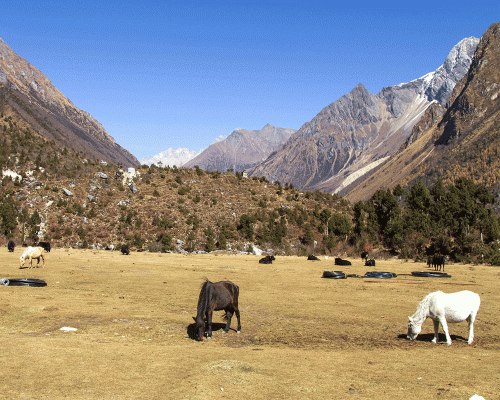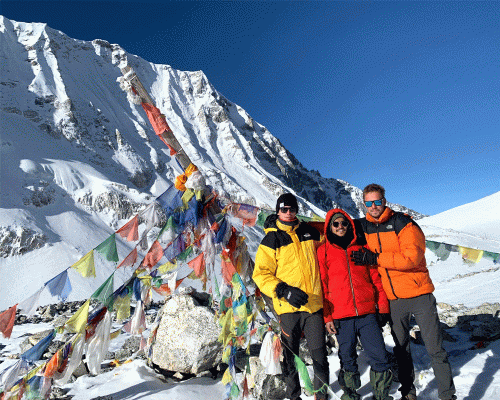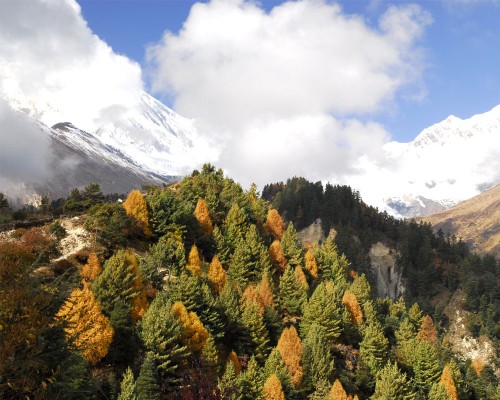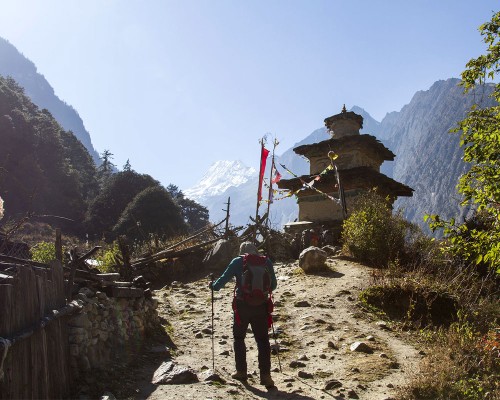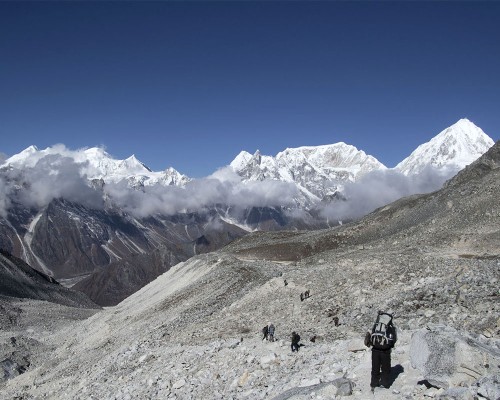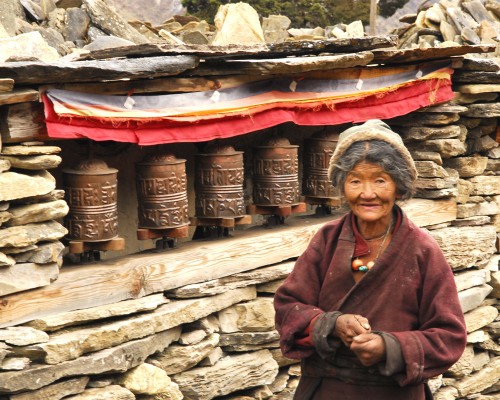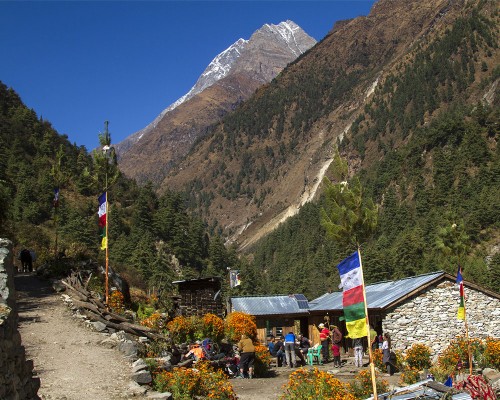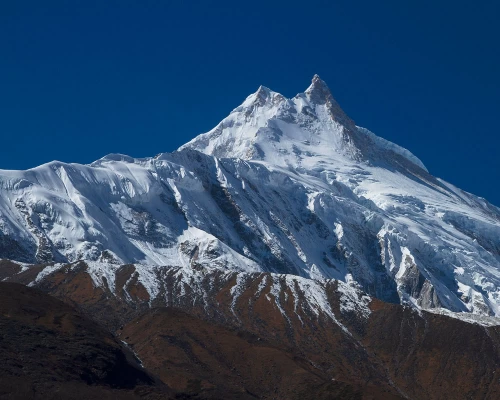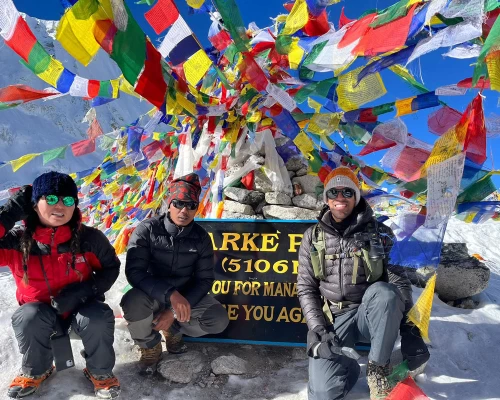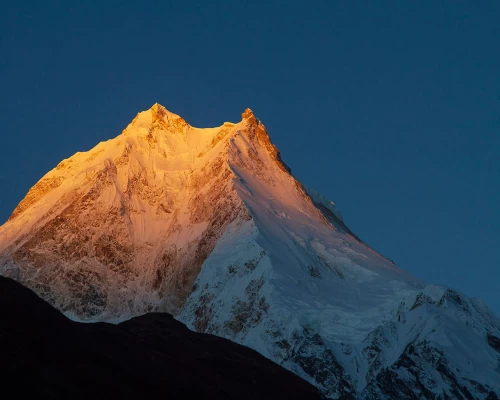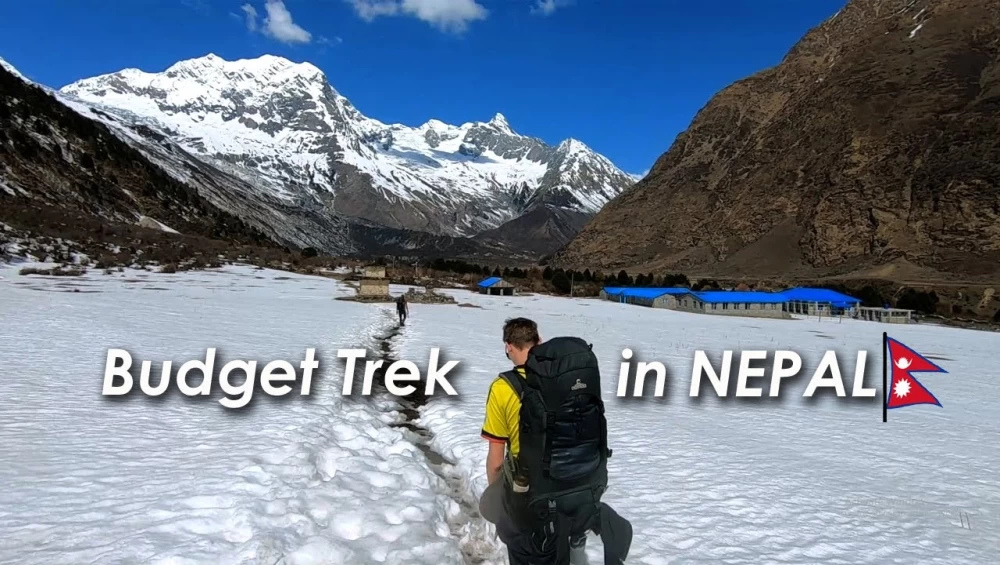The Manaslu Circuit Tsum trek is a beautiful journey that combines two amazing areas: Manaslu Circuit and Tsum Valley in Gorkha, Nepal. In the past, trekkers used to finish the Manaslu Circuit trek and then head to Tsum Valley separately. Now, you can explore both in one trip.
Both the Manaslu and Tsum Valley areas are rich in Buddhist culture. Both have beautiful, untouched nature. Together, they make for a magical trekking experience.
This trek takes you through peaceful trails with fewer crowds, even during the busy season. You will enjoy stunning views of tall mountains, green farmlands, and forests.
Overview
The Manaslu Tsum Valley Trek is a 22-day adventure through the stunning Manaslu region of Nepal. Starting and ending in Kathmandu, this trek takes you through traditional villages inhabited by the Gurung and Tamang people, offering a rich cultural experience.
The trek is known for its challenging nature, with high altitudes and steep terrain, but the breathtaking views of the Himalayas, including Manaslu—the eighth-highest mountain in the world—make it all worthwhile. This journey combines the best of the Manaslu Circuit and Tsum Valley.
Best Time to Trek Manaslu Tsum Valley
The ideal time to trek the Manaslu Circuit and Tsum Valley is during two main seasons: autumn (September to November) and spring (March to May). These months offer the best trekking conditions, stunning views, and comfortable temperatures.
Autumn (September to November)
Autumn is the most popular trekking season for Manaslu and Tsum Valley. The skies are generally clear. It offers breathtaking views of the snow-capped peaks, including Mount Manaslu. The weather is stable, with pleasant daytime temperatures and cool nights. You will also experience vibrant local festivals. Such as Dashain and Tihar, adding a rich cultural experience to your trek.
Spring (March to May)
Spring brings warmer temperatures and blooming rhododendrons. The trails are painted in bright colours during this season.
Spring is perfect for nature lovers. The lush forests come to life with greenery and warm weather.
The valleys are also filled with blossoming flowers, creating a vibrant landscape. This makes spring an ideal time for hiking and enjoying nature’s beauty. The weather is slightly warmer than autumn, making high-altitude trekking more comfortable.
Winter and Monsoon Considerations
Trekking is possible during winter (December to February) and monsoon (June to August).
Winter brings freezing temperatures and snow at higher altitudes. This makes crossing the Larkya La Pass difficult.
Monsoon season brings heavy rain and slippery trails. The views are often clouded. However, it can be a good time for solitude seekers who don’t mind wet conditions. Both seasons require extra preparation and caution for trekkers. Additionally, the challenges of a high-altitude trek are amplified during these seasons, requiring even more rigorous preparation and caution.
Major Aspects of Manaslu and Tsum Valley
The Manaslu and Tsum Valley trek offers a rich blend of flora, fauna, wildlife, and cultural significance. The Manaslu trek, in particular, provides an unparalleled experience with its stunning landscapes, challenging routes, and unique cultural encounters.
Flora and Fauna
The trek takes you through lush forests rich with diverse flora. In the lower regions of the Manaslu Circuit, you’ll see rhododendrons, pine, and fir trees.
As you climb higher, the landscape shifts. Alpine shrubs and grasses begin to dominate the area.
In Tsum Valley, the forests remain pristine and untouched. Rare plants like blue poppies and wildflowers flourish here. This remote, protected area showcases a unique and beautiful environment.
Wildlife
When it comes to wildlife, both regions boast an impressive array of species. The Manaslu Conservation Area protects various animals. It includes the Himalayan tahr and musk deer. You may even spot the elusive rare snow leopard.
Birdwatchers can look out for Himalayan griffons and pheasants along the trek.
Tsum Valley, located in the Tsum Valley Conservation Area, is home to endangered species like the red panda and Tibetan wolf. You may also see Himalayan blue sheep and various bird species in this region.
Cultural Significance
The trek’s cultural significance is equally captivating. The Manaslu Circuit showcases strong Tibetan Buddhist influences. Traditional Gurung and Tibetan villages offer a glimpse into the region’s spiritual life.
Trekkers visit ancient monasteries like Pungyen Gompa and Lho Monastery. Here, local customs and religious practices are deeply tied to Tibetan Buddhism.
The Tsum Valley trek route offers unique cultural experiences, such as visiting monasteries and enjoying the rich Tibetan traditions found within Tsum Valley. Tsum Valley, long isolated, is a cultural treasure. The Tsumba people maintain ancient Tibetan customs, festivals, and rituals.
Monasteries like Rachen Gompa and Mu Gompa reveal their way of life. Their spirituality is deeply rooted in centuries-old traditions.
